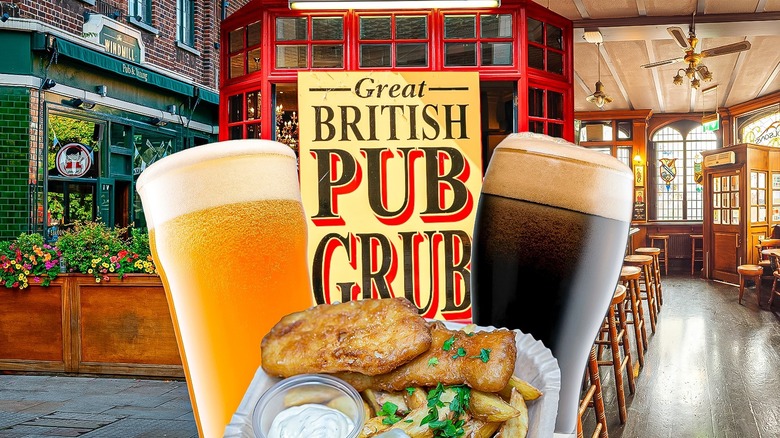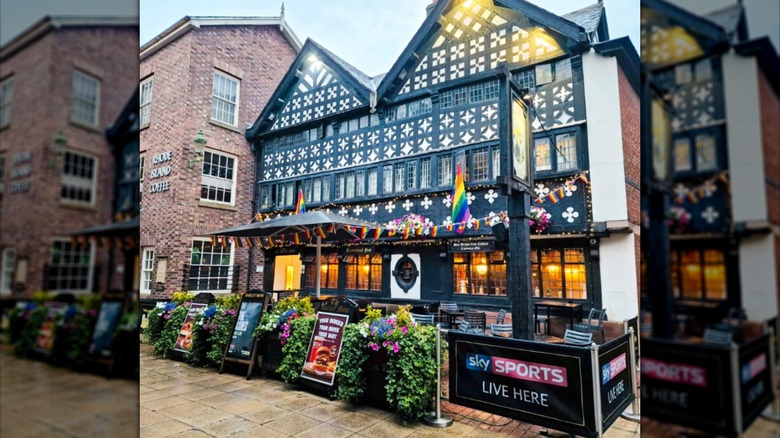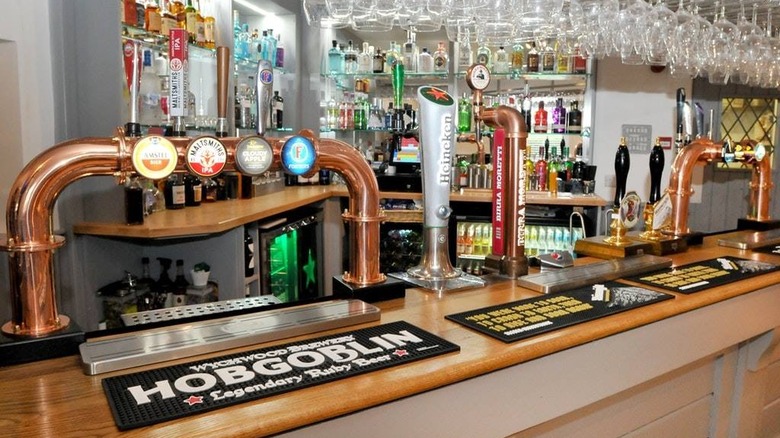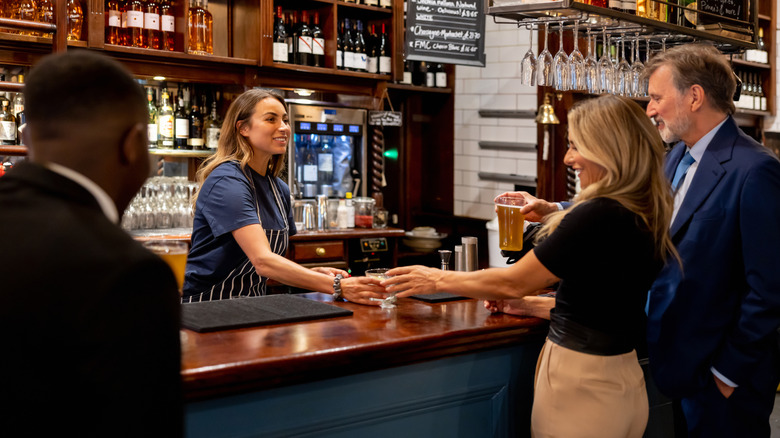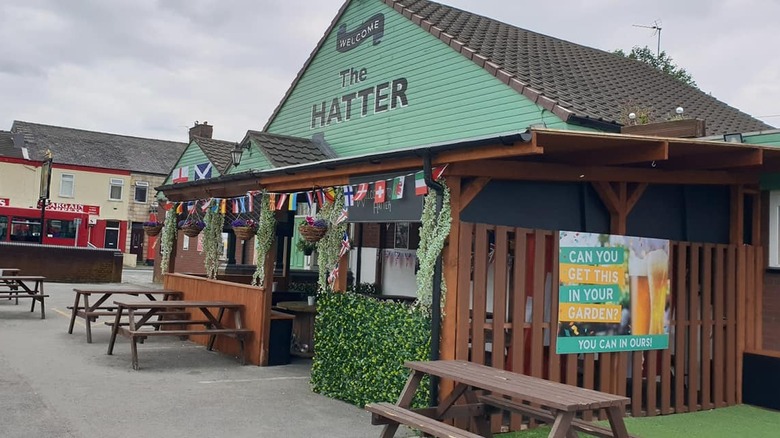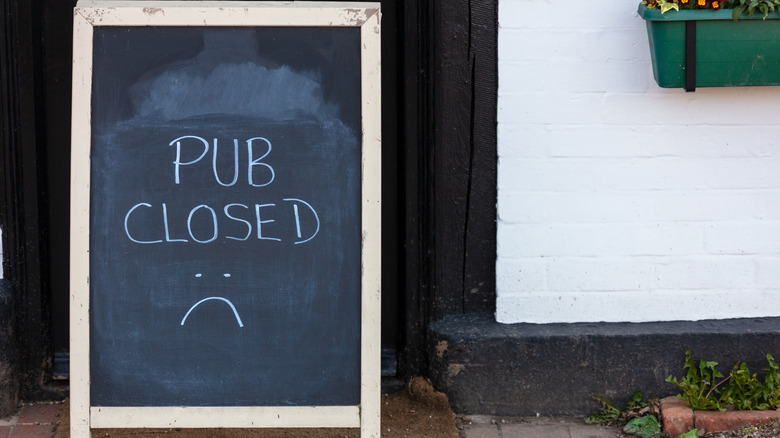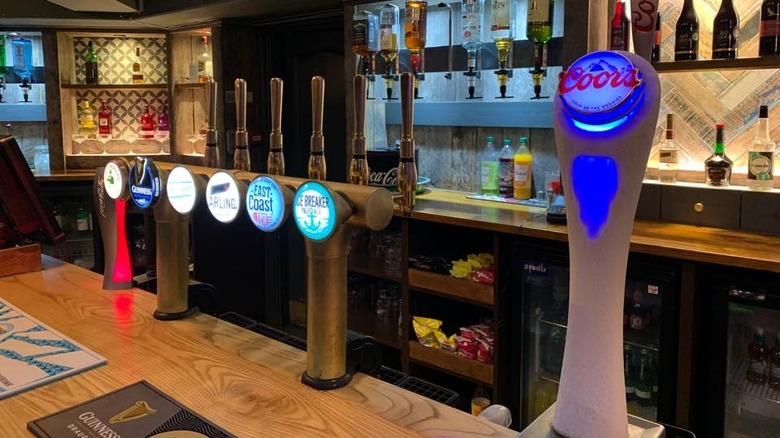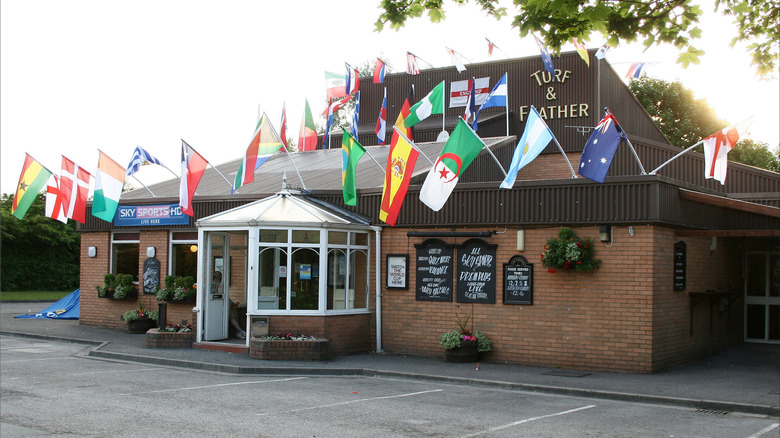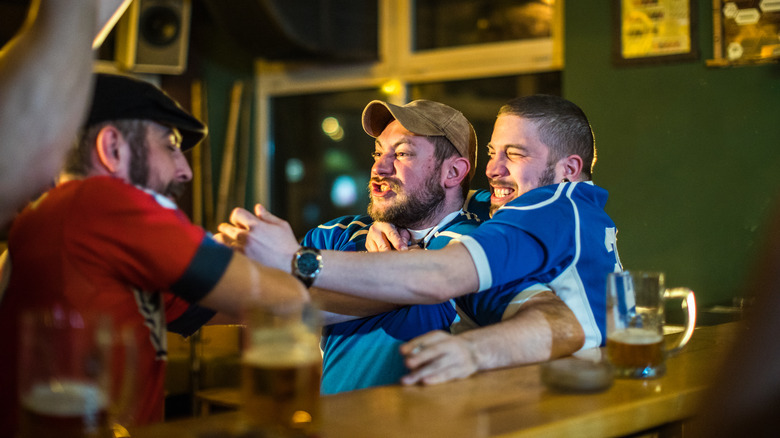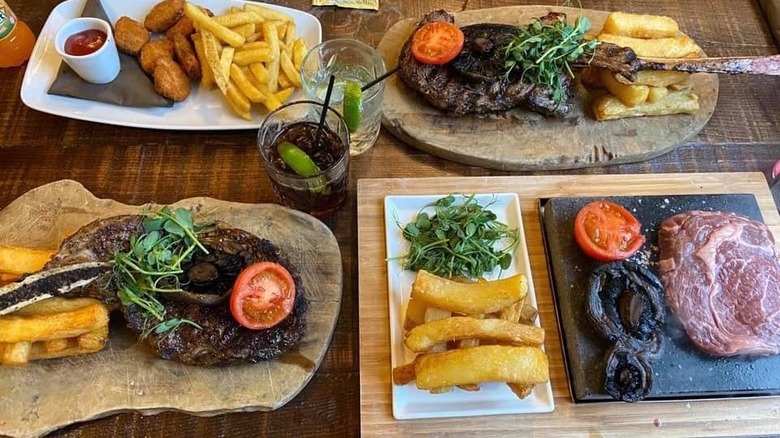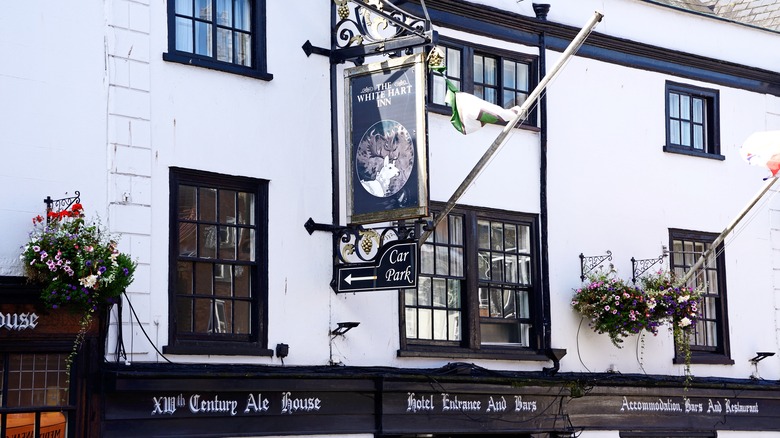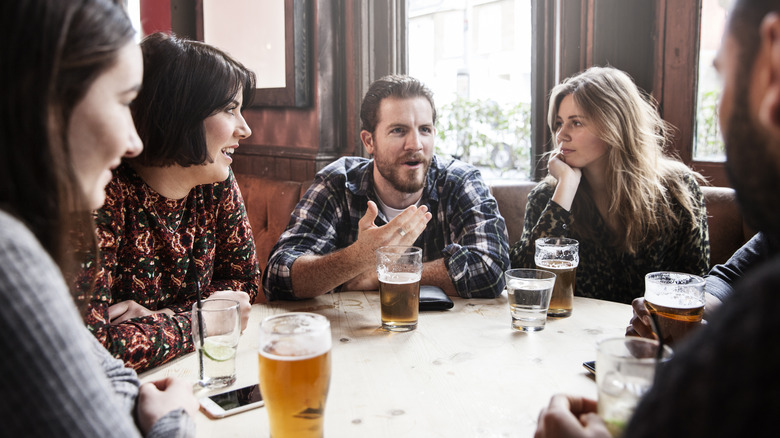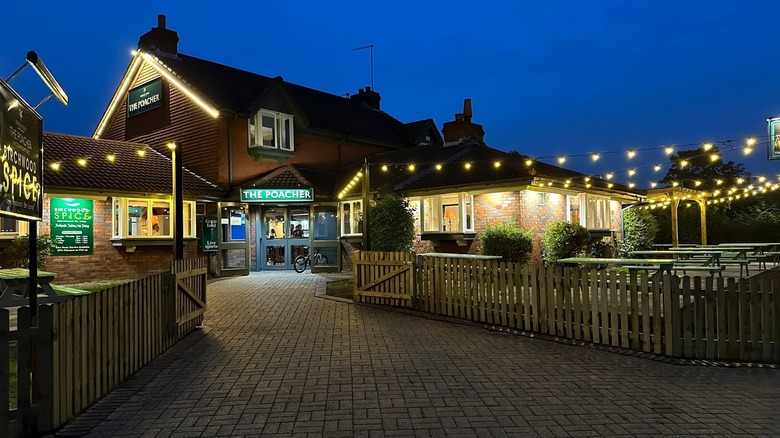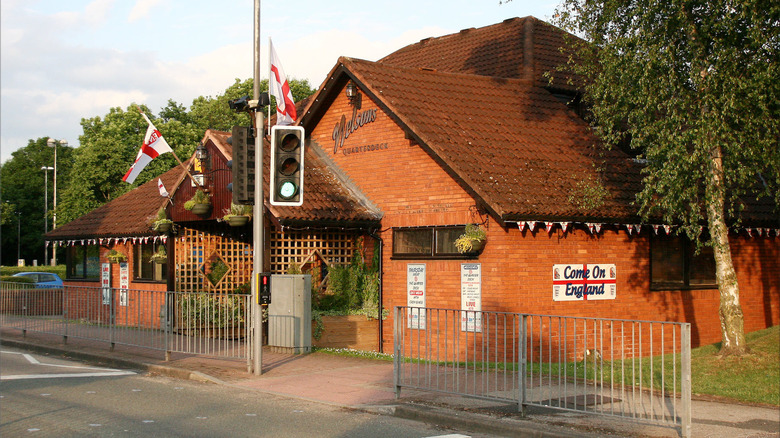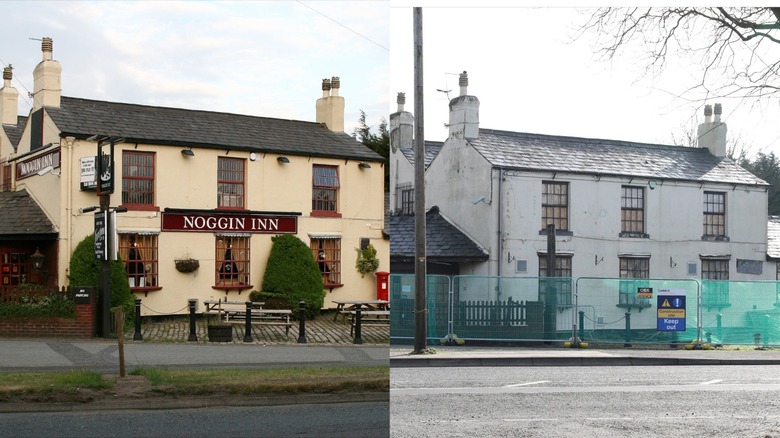15 Facts You Didn't Know About British Pubs
If you grew up in a working-class British town (like I did), pubs are a constant part of your life. They were a place you used to play as a child, somewhere you partied as a teen, and a place where you caught up with friends as you got older. Pubs aren't just a place to drink — they can also be important to their communities and hold a sentimental place in our lives, which extends far beyond the alcohol they serve. This is why I wanted to celebrate these British institutions by looking at some interesting facts about them.
For a Brit reading this article, many of these facts will be common knowledge but should still invoke a nostalgic smile. For those from foreign shores, you'll enjoy plenty of valuable information if visiting a British pub is on your wish list. With my intimate knowledge of British pub culture, I'm here to serve as your guide through the customs and traditions of this curious aspect of British life.
1. They've changed, a lot
When asked to picture a British pub, you might envision a quirky, dimly lit building with exposed beams and Victorian-style furnishings. There are still thousands of pubs like this in London and beyond, but many of them have either modernized or been rebuilt. This means that what you get when you enter a pub may not be what you expect. They were once a cornerstone of British social life but have developed into more of a treat than an everyday routine.
You'll still see those historic buildings with plenty of character, but there's now a wide range of sleek gastropubs that serve fine food and cocktails. Formerly male-dominated spaces, pubs now cater to a much broader audience, with many of them also being family-friendly. In the past, pubs offered little more than a drink and somewhere to sit. Many older pubs, however, have now caught up with the times and offer outdoor seating, live music, games, quizzes, and themed nights. As you can see in the above picture, there are still many that have retained their historic charm.
2. You have to order at the bar
When I first visited a pub in mainland Europe, I was taken aback that we didn't order at the bar and that someone approached us to take our drink orders. This concept was alien to me, as the only place where you usually get table service in Britain is in restaurants. High-end bars may offer table service, but pubs don't. There's also no "tab" culture here, as you typically approach the bar, pay for your drink right there, and take it back to your table (or find a place to stand with it).
This is often true even if the pub serves food, which can be confusing for some. With most large chains, like Wetherspoons, you'll take your menu to the bar (or use an app), give them your order, and they'll serve it to you once it's ready. This ties into the informal and communal atmosphere you'll find at most pubs. They're places to relax and unwind rather than be waited on hand and foot. Just make sure you don't make the mistake of sitting down patiently at your table for a waiting service that will never come!
3. Tipping isn't expected
Tipping has a fascinating history, but in British pubs, the practice is neither required nor expected. This is in sharp contrast to many other countries, especially America. If you don't tip in Britain, no one will look at you strangely. This is part of the more informal atmosphere, and staff members are paid a wage to reflect this. Tipping does still happen, but in my experience, this is more common in local pubs where the patrons have a friendly relationship with the bar staff.
It's important to note, however, that pub culture isn't anti-tipping, either. If you want to tip, the barkeep will gladly accept your money. In Britain, the tips are usually small gestures that don't rely on you giving a specific percentage. For example, if you paid for a £4.60 drink with a £5 note, it would be common to say, "Keep the change." A small tip isn't seen as offensive. Even in places that serve food, you usually pay for that food before receiving it, so no tip is given. Simply put, the tip is entirely at the patron's discretion with no social pressure.
4. The names have history
Many British pubs have names that may sound quite random, with the most common name being the Red Lion. Yet almost every pub name is steeped in history. Many of them have royal connotations, which historically demonstrated the landlord's allegiance to the Crown. A common example of this is the White Hart. A hart is a male deer, otherwise known as a stag. King Richard II used a white hart as an emblem, and landlords named their pubs in this manner to honor him. Other common names such as "The Crown" and "The Royal Oak" have more obvious royal connections.
Other pubs may be named after local sports, local legends, trades, religions, or beer production, among others things. The Hatter in Warrington (pictured above) is named such because of the town's connection to Lewis Carroll, who wrote "Alice in Wonderland." Carroll was born in a village just outside of Warrington and even inspired another of the town's pub names: The Looking Glass. There are too many weird and wonderful names to mention, but if you find yourself in a peculiarly titled pub, make sure to ask where it got its name.
5. You probably won't witness a lock-in
In Britain, a lock-in occurs when you stay in a pub after its licensing hours expire, which traditionally occurs at 11 p.m. Unless the establishment has a special license, it's illegal for pubs to sell alcohol after this time. So, if there were still plenty of locals wanting to drink, the owner would dim the lights, turn off the music, and lock the door. The establishment would continue to sell alcohol on the unspoken agreement that this illegal act was a win-win for everyone. Once the landlord wanted to call it a night, he'd open up a side door, and patrons would drunkenly stumble home.
These gatherings are a rare sight for a few reasons. Some pubs now have 24-hour licensing, which makes selling alcohol after 11 p.m. legal. City-center pubs also wouldn't risk the repercussions, as the police presence is much more prominent. Finally, landlords are also unlikely to partake in this practice unless the patrons are trusted locals. However, if you find yourself in a pub away from the beaten path with drinks still flowing as 11 p.m. approaches, you may just find yourself in a lock-in.
6. Don't expect a range of British lagers
If you enter a British pub, the majority of people will be drinking lager, especially the young men. However, it's a curious quirk of British life that the lager they're drinking is highly unlikely to be made by a British company. Some places won't even have a British lager on tap at all, and you're more likely to find Italian, Czech, Belgian, Dutch, or even American beer in these pubs. British brewing tradition is much more deeply rooted in the production of ales and bitters.
This is still the case today, with bars usually offering at least one British ale on draft. In plenty of pubs, you have the contrast of niche, locally brewed ales alongside globally recognized lager brands. This may come as a surprise to those expecting to sample a crisp, refreshing British lager. Instead, it's better to immerse yourself in the robust flavor of British ales, even if the Brits around you may be drinking foreign beers instead.
7. Most are very friendly
The majority of British pubs on TV and in films are shown as friendly places with a welcoming atmosphere and plenty of smiling faces. This stereotype, surprisingly, is quite accurate. Pubs are usually full of friendly staff and patrons who will be more than happy to have a conversation with you. If there is music in a pub, it's usually at a lower volume than in bars, allowing you to have a chat without raising your voice.
Pubs are community hubs with relaxing environments where social interactions are encouraged. While the latest football match or the weather may be on top of the list of conversation topics, you're sure to find something to chat about. You'll feel at home in most establishments, but as you'll soon read, it's not always that way. In a British pub, you're likely to get a warm reception. If you don't, there's probably another pub not too far away.
8. Some pubs can be intimidating
While many British pubs offer a friendly vibe, some pubs can be a little different. Here, we're mainly talking about pubs situated away from city-center areas that can have a more intimidating atmosphere. In these cases, the social dynamics can shift, and these pubs can have more insular crowds that may not be open to outsiders. I was once with a friend who was asked to leave a pub simply because he spoke with an accent from a neighboring city.
This can make you feel uneasy while you're there, but if you have an open mind, are respectful, and are able to take (sometimes offensive) "jokes," you should be okay. These pubs can be hard to identify, but they're usually away from any tourist areas and are in places with higher crime rates. Here, it's important to use your common sense. If you have a different accent, people will likely comment on it. If you're wearing an out-of-town sports jersey, it will be mocked. Most of this teasing is friendly, but if you're not used to British humor, you may not feel that way.
9. They're a great place for cheap food
Even though it's something of a myth, British food doesn't always have a glowing international reputation. If you're looking for somewhere to have a nice, cheap meal, though, the pub is usually a sure bet. The dining experience may be quite peculiar to those unfamiliar with it. The menu you'll receive is often a mishmash of different food cultures. Along with hearty British staples like fish and chips, steak, and Sunday roasts, you may find other options like lasagna, curry, or pizza. And these will come at much more affordable prices than you'd see at traditional sit-down restaurants.
Since you'll pay beforehand at the bar, you can also head out the door as soon as you've finished, making it a quick option if you've got somewhere to be. Not all pubs offer food, and high-end pubs may offer a more traditional dining experience with higher prices. But if you're looking for a quick bite to eat, the pub is usually the place to go. The food quality can be hit-or-miss, though, so it's best to check out some reviews beforehand.
10. Most have pictorial signs
Pictorial signs outside of British pubs are a common feature. Most of them have a picture that references the pub's name, and they can be beautiful works of art. They're often as old as the pubs themselves, and hundreds of years ago, they used to be a legal requirement. It's thought that these signs originated during a time when illiteracy was common and people had to rely on visual symbols to identify establishments.
King Richard II passed an act in 1393 stating that pubs and inns had to have signs identifying themselves. As we've already seen, for pubs loyal to King Richard II, this was usually a white hart. While this practice is still common, it's sadly a rarer feature in recently built pubs. These signs have always lent character to the streetscape and can help the pub become part of the local identity. Each traditional pub has its own history, and the pictorial sign can be an important part of telling its story.
11. The U.K. pint is bigger than the American pint
It would be fair to assume that pints are the same size in every country. However, this is far from true. In the U.K., the standard beer serving is about 568 milliliters, which is bigger than in most other cultures. This contrasts with the American pint, which is significantly lower at 473 milliliters. In Europe, the size of a pint is usually 568 milliliters, as in the U.K., but this isn't a standard beer serving. Throughout mainland Europe, most countries serve beer in a 500-milliliter (or 17-ounce) glass.
So, if you find yourself a little bit more drunk than usual after a few pints, you can blame the fact that you've probably had more alcohol than you're used to. The generous size of a U.K. pint allows you to relax and enjoy your time without needing constant trips to the bar. In Britain, you may hear someone ask you if you "fancy a pint," meaning they want you to head to the pub and grab a beer.
12. Many have a unique layout
British pubs have a long history, with many of them dating back over 500 years. With such incredible history, it's likely that a pub's use has changed over the years. Many pubs in city centers were once isolated buildings that served as places to stay for people on long journeys. One feature rarely seen in pubs these days is snug rooms, which were private areas for richer locals, women, or meetings. These tucked-away areas have now been converted to open spaces, but it makes for a unique layout.
In addition, fireplaces may have been removed, other rooms converted, or modern amenities added. This means many pubs are a mishmash of rooms with different shapes, levels, and uses. Today, this variety gives patrons a wide selection of lively bar areas or quieter rooms away from the hustle and bustle. This also adds to the pub's charm and character, as you may enjoy guessing how it looked hundreds of years ago.
13. They're commonly called 'the local'
In Britain, the term "the local" refers to the pub nearest to your home, and many people have one within walking distance. Many homes were built around older public houses, and many pubs were built in newer planned communities. For example, the houses in the area where I live were built in the 1980s. It's a small ring road, and a pub (pictured above) was built in the center.
It's not uncommon for a town to be divided into small areas, each of which has its own pub. These pubs effectively become community hubs where you're likely to see at least a few people you know from the nearby area. So, if you ever hear a phrase like "We'll just go for one in the local," now you know what it means. Locals are important, and patrons are often loyal to them. Just as people may have an affinity for their own hometown or country of origin, people can have a strong connection to their local.
14. They can become insanely busy during sporting events
Do you want to sample traditional pub life? Well, it may be a good idea to check the sporting calendar first. Even if they don't look like sports bars, most pubs will have multiple screens showing various sports. For example, if you're in Manchester when Manchester United is playing, the pubs are going to be crowded and boisterous. Big games can draw big crowds, even if no local teams are playing.
If you're a sports fan, this can be a great experience, as you'll sample an atmosphere that's similar to being at the game itself. If you're not a sports fan, though, it's best to wait until the game has finished and the crowd has dispersed. Many pubs will also stop or pause dining to accommodate sports fans. The biggest crowds will always be found during a major tournament of English football (soccer) games. During these times, every pub in the land will be full of enthusiastic fans, and plenty of pubs will decorate themselves with English flags. This also applies to Wales and Scotland, should one of their teams be in a big game. Britain is sports-mad, and you should bear this in mind if you want to avoid (or join) the raucous atmosphere of a big game.
15. Pubs have drastically reduced in number
Here, I end on a sad note. In the past few decades especially, the number of pubs in Britain has drastically reduced. The reasons for this are quite complex and have been linked to a wide range of factors. There's been a change in drinking habits, how people socialize, economic pressures, and a rise in alternative venues like restaurants and bars. Pubs used to be places where people would congregate to hear local stories and catch up with one another, but all this can now be done online.
This decline has changed the perception of the British pub from a part of everyday life to more of a cherished gathering place. A byproduct of this is local pubs taking on greater significance in their communities and more local efforts to prevent historical pubs from being demolished. As you can see from the picture above, these efforts aren't always rewarded — the pub shown above is now demolished. So, if you're ever in doubt about visiting one, remember that if you do, you're playing your part in keeping great historical British pubs alive.
